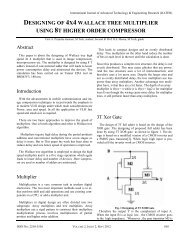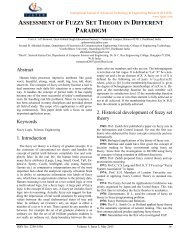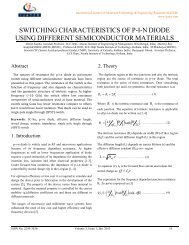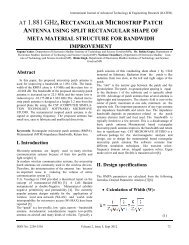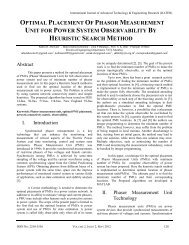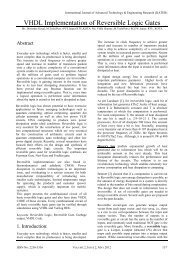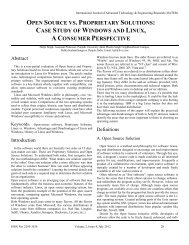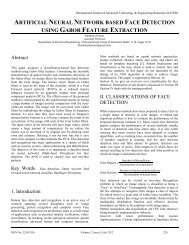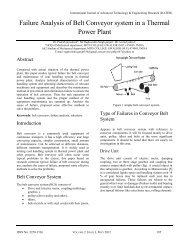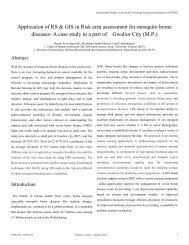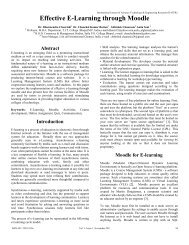implementation of turbo decoder using max-log-map ... - ijater
implementation of turbo decoder using max-log-map ... - ijater
implementation of turbo decoder using max-log-map ... - ijater
You also want an ePaper? Increase the reach of your titles
YUMPU automatically turns print PDFs into web optimized ePapers that Google loves.
International Journal <strong>of</strong> Advanced Techno<strong>log</strong>y & Engineering Research (IJATER)<br />
Fig. 6 Branch Metric Unit.<br />
Fig. 9 Conventional LCU Units<br />
Fig. 7 SMU Unit<br />
2. Normalization / Saturation:<br />
To avoid overflow metrics, Normalization is usually<br />
employed as shown in figure 5 and 6. We have adopted a<br />
very efficient normalization scheme where at each time<br />
instant we check if any <strong>of</strong> the state metrics is greater than<br />
2,[5] then a fixed value 2 is subtracted from all<br />
state metrics. This is shown by normalization (N) block<br />
shown in figure 5 and 6[3]. The block comprises <strong>of</strong> a subtractor<br />
that subtracts a fixed value (2) from state metrics<br />
and a multiplexer that selects the subtracted value if<br />
the normalization has to be employed. The multiplexer select<br />
signal is provided by each ACS block and in case <strong>of</strong><br />
state serial architecture <strong>map</strong>pings (states >8) the select<br />
signal is provided after all the states are processed [5].<br />
The LLR values (L1 or L0) are calculated <strong>using</strong> forward<br />
(α0-7) and backward (β0-7) states and branch metric<br />
(γ0-1) values <strong>of</strong> all states. The LLR computation unit<br />
(LCU) is similar to the SMU which consists <strong>of</strong> 3-stage<br />
compare and select process results long critical path delay.<br />
In order to reduce the critical path delay LCU is pipelined<br />
[6].<br />
E. LLR Output Iterations<br />
The output L (dˆ) <strong>of</strong> the <strong>decoder</strong> in Figure 10 is made<br />
up <strong>of</strong> the LLR from the detector, L′ (dˆ), and the extrinsic<br />
LLR output, Le (dˆ), representing knowledge gleaned<br />
from the decoding process. As illustrated in Figure 10, for<br />
iterative decoding, the extrinsic likelihood is fed back to<br />
the <strong>decoder</strong> input, to serve as a refinement <strong>of</strong> the a priori<br />
probability <strong>of</strong> the data for the next iteration [9].<br />
3. LLR COMPUTATION UNIT:<br />
Fig. 10 LLR iteration output values<br />
ISSN No: 2250-3536 Volume 2, Issue 4, July 2012 249





